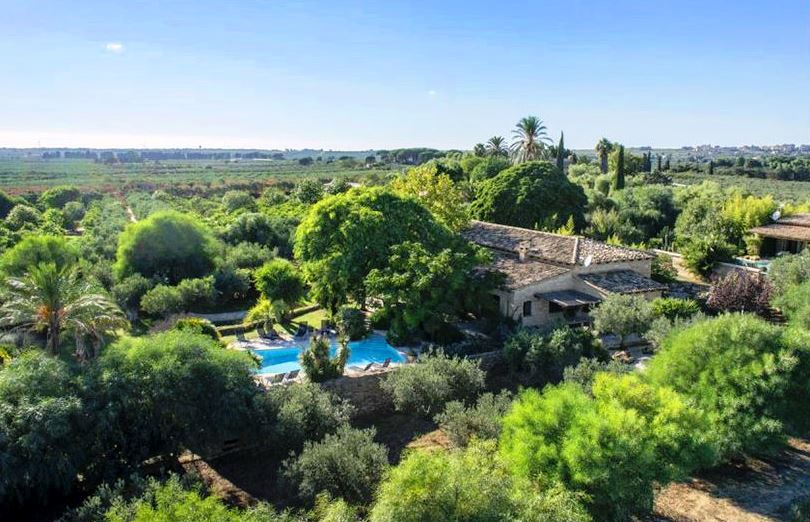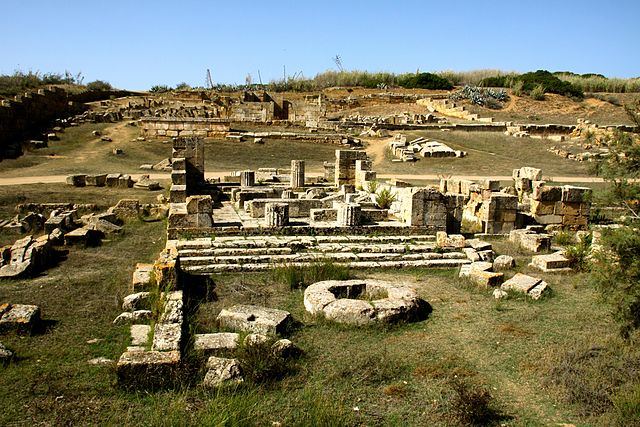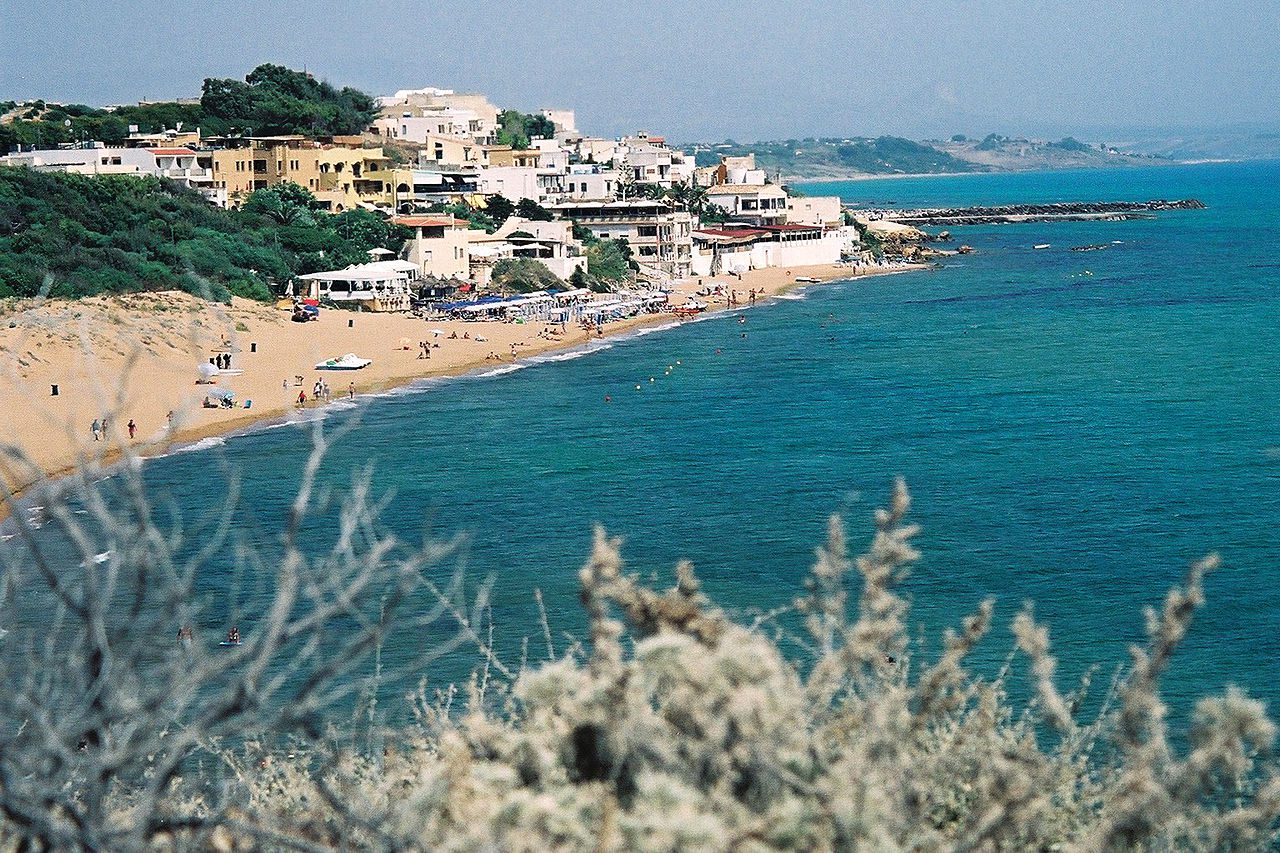Some places feed our wanderlust more than they satisfy it. We recognize this on our first day in a location—in the back of our mind, we are already planning to return, to savor more, and to uncover whatever hidden corner we might have missed our first time around. Case in point: Selinunte, Sicily. Rent a villa in Sicily and let the slow pace of this mythical island wash over you and feed your sense of adventure…as well as your hunger (more on that in a minute).
Selinunte was an ancient Greek city, now the territory of Castelvetrano in the province of Trapani, on the very south-west coast of the ancient trinacria.
The word Selinunte derives from ancient Greek, meaning “wild parsley,” (which is actually a type of celery). Apparently the plant grew abundant along the shores of the river Selinos, today Modione, and hardly worth the title of river anymore – maybe a creek at the most. But we know that ancient coins retrieved in this area were minted with the representation of a large leaf of celery. So there you have it.
What we don’t know is if this wild parsley was crucial to the economy of the area at the time, or if it simply pleased one of the Greek gods, then worshiped in this part of Sicily. But what we know for sure is that a colony was built here in the VII century B.C. by Greeks leaving from the eastern colony of Megara Hyblaea, pressured by enemies who prospered in the adjacent territories.
As it was customary, the Greeks wasted no time and made themselves comfortable by building a nice acropolis on the hilltop, about 30 meters above the sea level. To date, despite wars, earthquakes, and every sort of destruction that one could possibly imagine, the archaeological park of Selinunte is claimed to be the largest in Europe. And even though its ruins may not be the most well-preserved, the site is totally worth a visit, because it shows signs of several dominations through the centuries; and because it is offensively affordable; and because the local administration has actually put some effort into its maintenance.

Suffice to say that the area had been (literally) forgotten for centuries and taken over by the luxuriant Mediterranean flora, until the Dominican Monk Tommaso Fazello, from the nearby Sciacca, in 1551, riding a strong Sicilian donkey, ventured into the unknown, determined to find the remains of the once glorious Selinunte. And he found it.
He (and his donkey) also discovered that the locals once called this site “land of the fleas.” Much had changed by the time that part of the main temple, the one to Hera, was actually restored in the year 1958. Which is why today we can admire its columns still standing. The other two temples of the main area are possibly attributed to Dionysus, god of the wine, and Zeus, the father of the Olympian Gods.
There are several other sites in the park. I will only mention the sanctuary Malophoros dedicated to Demetra where, among the other things, about 12,000 miniature terracotta statues of a female goddess were found. (For reference, the famous terracotta Chinese army, counts “only” about 8,000 pieces.)
So, you have spent three hours wandering in the time machine, and now you are in a remote part of Sicily in the mood for some entertainment. Fortunately, every single morning in Selinunte, with the exception of those days when a merciless sirocco blows, a fish auction is held along the beach. The auction even has a special name: “The Enchantment of the Fish.” Bidders are typically fish markets and local restaurants. Choose one of these restaurants and let the chef spoil you with delicacies such as spaghetti ai ricci (sea urchin spaghetti), or shrimp with wild asparaguses, or the famous sarde alla beccafico, or the tempting swordfish rolls.
If you are not into seafood, what about the “vastedda del belìce,” the name in Sicilian dialect for a semi-soft cheese? The vastedda has earned the D.O.P. mark, it has been listed in the official slow-food record, and it is subject to Nazi-like quality control. It must be round, and it must have a diameter between 15 and 17 centimeters, and height between 3 and 4. This optimizes its taste. Enjoy it on a thick slice of the local “dark” bread from Castelvetrano, with a brushstroke of extra virgin olive oil (also D.O.P. of course), and you won’t need anything else. Unless, well, you can make some room for a delicious cannolo or for a sweet ravioli di ricotta, basically a giant ravioli dessert.
Before we move on (as I’m starting to feel a bit hungry), I will point you to a few other locations in the area where you will find plenty of beauty to entertain yourself during long passeggiata. The closest little town to Selinunte with living inhabitants is the above mentioned Castelvetrano; a relatively small center of Norman origins. Here you might just want to enjoy a gelato downtown, or visit the museum, which contains artifacts from Selinunte, or the famous church of San Domenico, overwhelmingly baroque, also known as “The Sistine Chapel of Sicily.” You’ve had enough history? You may want to consider the Circuito Internazionale di Triscina, where you can rent a kart and go a little wild.
About 30 minutes away from Castelvetrano, there is Mazara del Vallo. Here, don’t miss the Museo del Satiro Danzante, whose main artifact is, as per the name, the statue of a “dancing satyr,” accidentally found by fishermen in the year 1998. An extremely rare example of Greek bronze craftsmanship.
Or go “Rock the Kasbah,” I mean, wander the Kasbah, evidence of the once Arabic Sicily. Today, communities of immigrants from Tunisia live in the area, together with other ethnicities. In these narrow alleys, you’ll hear the sound of the muezzin, you’ll see spice merchants, and you’ll smell a divine seafood cous-cous.
Speaking of which—now I really have an appetite, and I’ll leave you to your plans for a trip to this charming corner in the island of Sicily.
(Thanks to Jessica Burgio, always a reliable source for tales of her beloved homeland, the island of Sicily. Photo credits: wikicommons)

Rick,
My paternal grandfather came to this country from Sicily in the late 1800’s. He was the “bastard” child of a “well-born” woman, and was given to a family of farmers who lived in Selinunte, to raise as their own. Rather than giving his their last name, they named him Guiseppe Selinunte. Many years later, when he arrived in America, the spelling of his last name became Silinonte. To this day, I don’t know of any Silinonte who isn’t a blood relative. I’ve always wanted to see Sicily and visit the birthplace of my grandfather, but never got there, although we’ve been to Italy on many occasions. Thank you for the wonderful written tour of that beautiful part of the world.
So glad you enjoyed it. And yes, you MUST visit there someday!
Rick, You’ve captured this part of Sicily beautifully. There are so many hidden treasures right there in Castelveltrano! I hosted a group there for a week last September, and it was magical. Bravo!